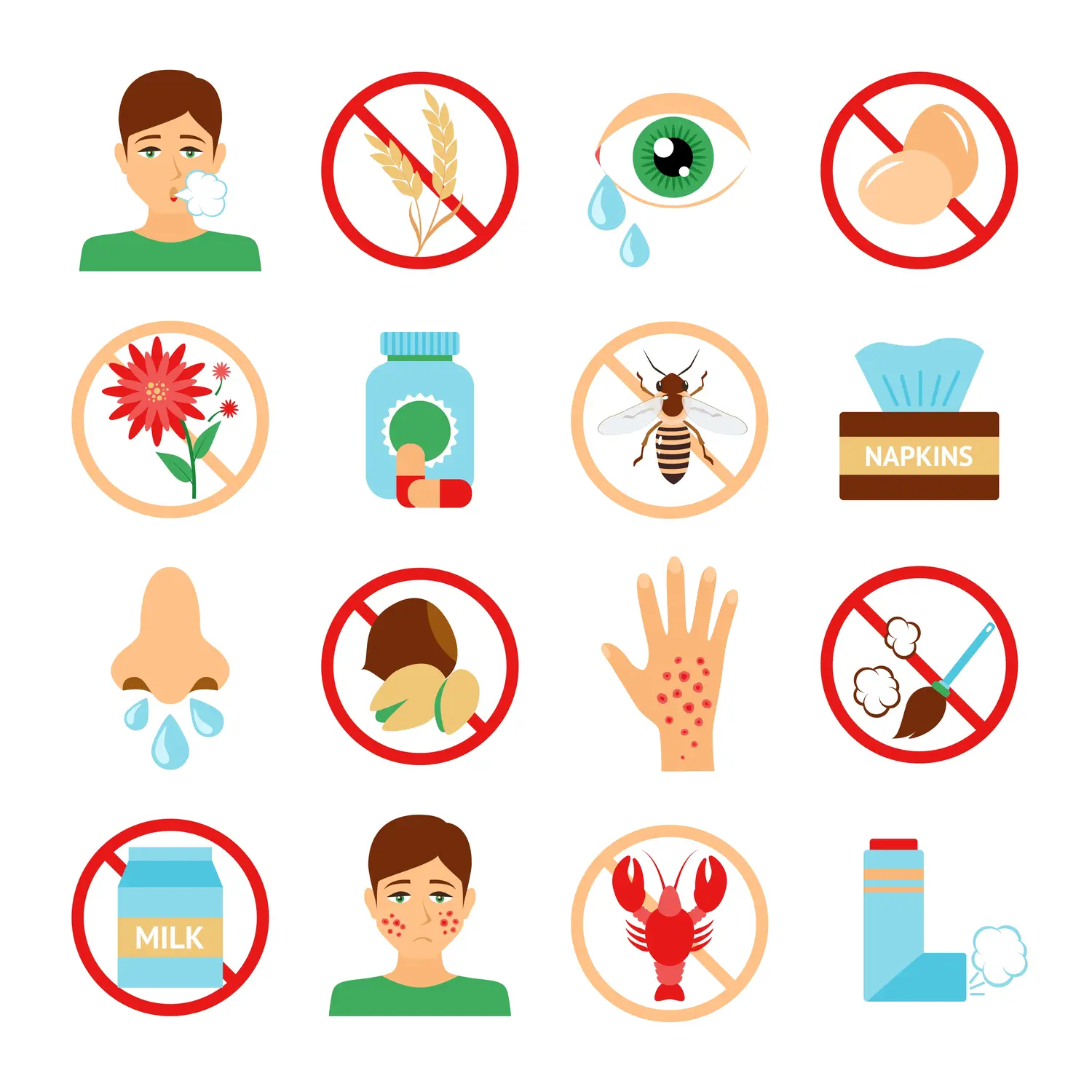Anaphylaxis is a severe, potentially life-threatening allergic reaction that can occur within seconds or minutes of exposure to an allergen. This condition requires immediate medical attention, as it can rapidly progress and cause serious complications or even death.
What is Anaphylaxis?
Anaphylaxis is an acute allergic reaction involving multiple organ systems. It occurs when the immune system overreacts to a substance (allergen) that is otherwise harmless to most people. The reaction triggers the release of various chemicals in the body, leading to symptoms that can range from mild to severe.
Anaphylactic Shock
Anaphylactic shock is a severe and potentially life-threatening condition that occurs as a result of a severe allergic reaction known as anaphylaxis. It involves a sudden drop in blood pressure and narrowing of the airways, which can lead to respiratory failure and cardiac arrest if not treated promptly.
Anaphylaxis Pathophysiology
Anaphylaxis is a severe, systemic allergic reaction that can lead to anaphylactic shock, respiratory failure, and death if not treated promptly. It is characterized by a rapid onset and involves multiple organ systems. The pathophysiology involves complex immunological mechanisms, primarily mediated by immunoglobulin E (IgE).
Steps in the Pathophysiology
- Sensitization:
- Initial exposure to an allergen (e.g., food, medication, insect venom) causes the immune system to produce IgE antibodies specific to that allergen.
- IgE antibodies bind to high-affinity IgE receptors (FcεRI) on the surface of mast cells and basophils, sensitizing these cells to the allergen.
- Re-Exposure and Allergen Binding:
- Upon re-exposure to the same allergen, it binds to the IgE antibodies on the sensitized mast cells and basophils.
- This cross-linking of IgE antibodies triggers the activation of these cells.
- Degranulation of Mast Cells and Basophils:
- Activation of mast cells and basophils leads to their degranulation, releasing preformed mediators stored in granules.
- Key mediators include histamine, tryptase, cytokines, and various enzymes.
- Release of Inflammatory Mediators:
- Histamine: Increases vascular permeability, leading to fluid leakage from blood vessels into tissues (edema), vasodilation (causing low blood pressure), and bronchoconstriction (narrowing of the airways).
- Tryptase and Other Enzymes: Contribute to tissue damage and further inflammation.
- Cytokines and Chemokines: Recruit additional immune cells to the site, amplifying the inflammatory response.
- Leukotrienes and Prostaglandins: Further enhance bronchoconstriction, mucus secretion, and vascular permeability.
- Systemic Effects:
- Cardiovascular System: Vasodilation and increased vascular permeability cause a drop in blood pressure (hypotension) and can lead to shock. Tachycardia (rapid heartbeat) occurs as the body attempts to compensate for low blood pressure.
- Respiratory System: Bronchoconstriction leads to airway narrowing, causing difficulty breathing, wheezing, and potentially respiratory failure. Laryngeal edema can cause airway obstruction.
- Gastrointestinal System: Smooth muscle contraction and increased permeability can cause nausea, vomiting, abdominal pain, and diarrhea.
- Skin and Mucosa: Urticaria (hives), angioedema (swelling of deeper layers of the skin), and flushing are common skin manifestations.
- Compensatory Mechanisms and Potential Collapse:
- The body’s compensatory mechanisms, including increased heart rate and vasoconstriction in non-essential vascular beds, may temporarily maintain blood pressure.
- Without rapid intervention, these mechanisms can be overwhelmed, leading to cardiovascular collapse, shock, and death.
Common Triggers
Anaphylaxis is triggered by exposure to specific allergens that the immune system mistakenly identifies as harmful. Here are the most common causes:
- Foods: Certain foods are among the most frequent triggers. Common food allergens include:
- Peanuts
- Tree nuts (e.g., walnuts, almonds, cashews)
- Shellfish (e.g., shrimp, lobster)
- Fish
- Milk
- Eggs
- Soy
- Wheat

- Medications: Some medications can cause severe allergic reactions, including:
- Antibiotics (e.g., penicillin)
- Nonsteroidal anti-inflammatory drugs (NSAIDs) such as aspirin and ibuprofen
- Certain vaccines
- Muscle relaxants used during anesthesia
- Contrast agents used in imaging tests
- Insect Stings: Venom from insect stings can provoke anaphylactic reaction in susceptible individuals. Insects that commonly cause reactions include:
- Bees
- Wasps
- Hornets
- Yellow jackets
- Fire ants
- Latex: Latex, found in various medical and consumer products, can cause allergic reactions in sensitive individuals. Items that may contain latex include:
- Gloves
- Balloons
- Medical devices
- Rubber bands
- Exercise-Induced Anaphylaxis: In rare cases, physical activity can trigger anaphylaxis. This type can sometimes be related to the ingestion of certain foods or medications before exercise.
- Unknown Causes (Idiopathic Anaphylaxis): Sometimes, the exact cause cannot be determined. This is referred to as idiopathic anaphylaxis.

It’s important to note that anaphylaxis can be life-threatening, and symptoms can worsen quickly.
Symptoms of Anaphylaxis
It symptoms can appear quickly, often within minutes of exposure to an allergen, and can worsen rapidly. Common symptoms include:
- Skin Reactions:
- Hives (raised, red, itchy welts)
- Flushed or pale skin
- Itching
- Respiratory Symptoms:
- Difficulty breathing
- Wheezing
- Swelling of the throat and tongue
- Tightness in the chest
- Coughing
- Hoarse voice
- Cardiovascular Symptoms:
- Rapid or weak pulse
- Low blood pressure (hypotension)
- Dizziness or lightheadedness
- Fainting or loss of consciousness
- Gastrointestinal Symptoms:
- Nausea
- Vomiting
- Diarrhea
- Abdominal pain or cramping
- Neurological Symptoms:
- Anxiety or a sense of impending doom
- Confusion
- Headache
- Other Symptoms:
- Swelling of the lips, face, or eyes
- Metallic taste in the mouth
Symptoms can vary in severity and may not all be present in every case of anaphylaxis. Immediate treatment with epinephrine is crucial, followed by emergency medical attention to manage and monitor the reaction.
Laboratory Tests for Anaphylaxis
The primary laboratory test used to confirm a diagnosis of anaphylaxis is a tryptase level blood test. Tryptase is an enzyme released from mast cells, which are involved in allergic reactions. Levels of tryptase rise during an anaphylactic reaction and remain elevated for several hours.
Other tests might be performed to identify the trigger of the anaphylactic reaction, such as:
- Allergy skin tests: To identify specific allergens that might trigger anaphylaxis.
- Specific IgE blood tests: To measure levels of IgE antibodies against specific allergens.
It’s important to note that while these tests can be helpful in diagnosis and management, the clinical presentation is often sufficient for diagnosis.
Treatment for Anaphylaxis
Effective management requires prompt recognition and immediate intervention. Here are the key steps:
- Administer Epinephrine:
- Use an epinephrine auto-injector (e.g., EpiPen) at the first sign of anaphylaxis.
- Inject into the outer thigh, through clothing if necessary.
- Epinephrine is the first-line treatment and works quickly to reverse the symptoms.
- Call Emergency Services:
- Dial emergency services immediately after administering epinephrine.
- Inform them that the individual is experiencing anaphylaxis.
- Position the Person:
- Have the person lie down with their legs elevated to help maintain blood flow to vital organs.
- If they are vomiting or have difficulty breathing, position them on their side.
- Second Dose of Epinephrine:
- If symptoms do not improve within 5-15 minutes, administer a second dose of epinephrine, if available.
- Stay with the Person:
- Monitor their condition and stay calm.
- Keep them warm and comfortable.
- Supplemental Treatments:
- Antihistamines: Can help alleviate itching and hives but are not a substitute for epinephrine.
- Corticosteroids: May be given in a medical setting to reduce inflammation and prevent a delayed reaction.
- Bronchodilators: For asthma-like symptoms, inhaled bronchodilators can be used to ease breathing.
- Medical Monitoring:
- In the emergency room, healthcare providers will monitor the person’s vital signs and may administer intravenous fluids, oxygen, and additional medications as needed.
- Follow-Up Care:
- An individual who has experienced anaphylaxis should see an allergist for further evaluation and management.
- They may be prescribed an epinephrine auto-injector and receive training on its use.
- Development of an emergency action plan is essential.
Living with Anaphylaxis
It can be challenging, but it’s possible to manage. Here are some tips:
- Educate yourself about your allergy.
- Build a strong support system.
- Consider carrying a backup emergency plan.
- Don’t be afraid to ask for help.
If you suspect you or someone else is experiencing anaphylaxis, call emergency services immediately.
Preventive Measures
- Avoid Known Allergens:
- Identify and avoid exposure to substances that trigger anaphylaxis.
- Medical Alert Identification:
- Wear a medical alert bracelet or necklace indicating the allergy.
- Educate and Inform:
- Inform family, friends, coworkers, and teachers about the allergy and how to respond in an emergency.
- Ensure schools and workplaces have an action plan in place.
- Carry an Epinephrine Auto-Injector:
- Always have an auto-injector available and know how to use it.
- Ensure that others know where it is kept and how to administer it if necessary.
- Regular Check-Ups:
- Regular visits to a healthcare provider to manage and monitor the allergy.
Anaphylaxis is a medical emergency, and immediate action can save lives. Being prepared and educated about how to respond can make all the difference in managing this serious allergic reaction.
Conclusion
Anaphylaxis is a serious and potentially life-threatening condition that requires immediate medical attention. Understanding the causes, symptoms, and appropriate treatment can save lives. For those at risk, taking preventive measures and being prepared to act quickly in an emergency is crucial. Always consult with a healthcare professional for personalized advice and management strategies.
By staying informed and vigilant, we can better protect ourselves and our loved ones from the dangers of anaphylaxis.
Disclaimer: This blog post is intended for informational purposes only and does not replace professional medical advice. Always consult with a healthcare provider for diagnosis and treatment.
Faqs,
What is epi dose for anaphylaxis?
The recommended dose of epinephrine is as follows: Adults and Children weighing more than 30 kg (66 lbs): 0.3 mg of epinephrine, typically administered via an auto-injector (e.g., EpiPen® 0.3 mg). Children weighing 15-30 kg (33-66 lbs): 0.15 mg of epinephrine, typically administered via a pediatric auto-injector (e.g., EpiPen® Jr 0.15 mg). Epinephrine should be injected intramuscularly into the outer thigh. If symptoms persist or worsen after the initial dose, a second dose may be administered after 5-15 minutes. Always seek immediate medical attention following the administration of epinephrine.
What is the only way to prevent anaphylaxis?
The only way to prevent is to avoid known allergens.
How does epinephrine work during anaphylaxis?
Epinephrine reverses anaphylaxis by constricting blood vessels, opening airways, increasing heart rate, reducing swelling, and inhibiting histamine release.
Is idiopathic anaphylaxis an autoimmune disease?
Idiopathic anaphylaxis is not definitively classified as an autoimmune disease. While there are some theories and evidence suggesting potential autoimmune involvement, such as the presence of activated T cells in some patients, the exact cause remains unknown. More research is needed to determine the precise relationship between idiopathic and autoimmune disorders.
Can anaphylaxis be mild?
While allergic reactions can range from mild to severe, anaphylaxis is always severe.
How long does anaphylaxis last?
Symptoms can start within minutes and last for several hours.
Can I outgrow anaphylaxis?
It's possible for some allergies to lessen over time, but anaphylaxis is typically a lifelong condition.
Is anaphylaxis contagious?
No, its not contagious.
What is the difference between anaphylaxis and a severe allergic reaction?
Anaphylaxis involves multiple organ systems and is life-threatening, while a severe allergic reaction might involve only skin or respiratory symptoms.



